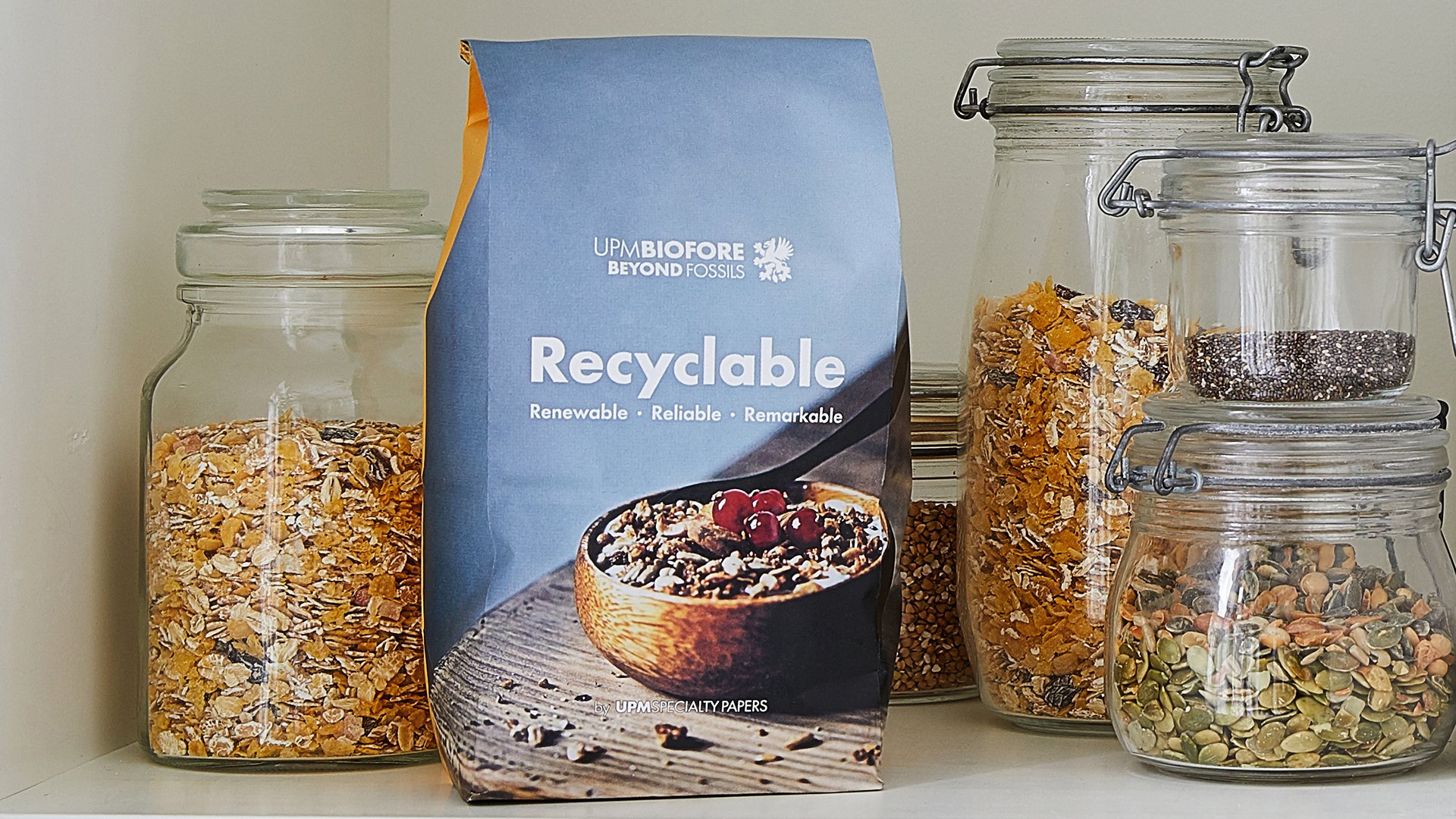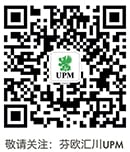As the term “barrier” implies, these packaging papers have a coating that guarantees a physical barrier against moisture and grease, for example. These barriers have traditionally been achieved using plastics, but now barrier papers provide a renewable alternative for many end-uses, while offering protection for the product inside. Achieving these features while ensuring that the paper can still be recycled requires extensive R&D work and a high level of expertise in paper making.
They protect the product inside and out
Barrier papers are strong enough to withstand the demands of transporting the product from the production facility all the way to the consumer.
The water vapor barrier offered by barrier papers is impressive. The barrier layer helps to protect dry foods like flour by keeping moisture out of the packaging, while also keeping foods like toast fresh for longer by preventing moisture from leaving. For baked bread, the barrier layer even allows warm steam to escape, preventing a crisp loaf from going soggy before you eat it.
Another example of the barrier layer is that it prevents grease from penetrating the package. In muesli for example, nuts and dried fruit contain fats that could result in the paper looking and feeling greasy – the barrier layer keeps it from doing that.
They can be used as a co-creation base
Barrier papers start with the base functionalities mentioned above, but it’s possible to work with converters to further process the paper in order to develop packaging that has additional barriers to suit the needs of different end-uses.
This system of co-creation with brands and converters is needed to find the best packaging for different end-uses, while helping brand owners meet their target of introducing more sustainable packaging.
For example, packaging for muesli that contains nuts or dried berries could use UPM AsendoTM as a base, with more barrier layers added by the converter to improve its grease resistance.
They are recyclable
Fibre-based barrier papers offer one solution to the problem of plastic waste in the food packaging industry. In fact, one benefit of paper as a packaging material is that it can be recycled in existing recycling streams. To achieve barrier properties without compromising recyclability, a lot of development work and expertise in paper making is needed.
According to Cepi, over 70% of paper was recycled in 2019, keeping fibres in the loop longer and extending the benefits of their renewable origin. If a package does not make it into the recycling bin, some barrier papers like UPM Asendo are biodegradable, acting as a “fail safe” in case they would end up in nature
Because barrier papers not only protect the product but also act as a print surface, they often eliminate the need for secondary and tertiary packaging for food items, further reducing waste.
For example, most frozen pizzas are currently packaged in a plastic film that is inside a cardboard box. If 70% of all frozen pizzas sold worldwide made the transition to barrier paper packaging, our experts estimate we could free the world from over 2 billion plastic packages in just one year.

They’re designed for shelf-appeal
Barrier papers offer brands the possibility to develop the best look and feel for their particular needs. Papers with two-sided coating like UPM AsendoTM Pro provide a printing surface that allows for sharp lettering, vivid colours and good visuality.
Additionally, barrier papers that are only coated on the inside presenting a surface that looks more natural and has an earthy feel.
They’re safe for direct food contact
UPM barrier papers comply with the most demanding requirements for direct food contact such as BfR and FDA
Barrier papers can also be used as a liner material when using recycled fibres in outer layer of packaging, for example in fruit trays. When newspapers and magazines are recycled traces of inks containing mineral oils may be present in those recycled fibres, meaning they can pose a health risk if they come in direct contact with food. UPM Specialty Papers has created two innovative technical solutions for preventing mineral oil migration: barrier papers UPM Asendo™ Pro and UPM Asendo™.
Text: Lara McCoy
